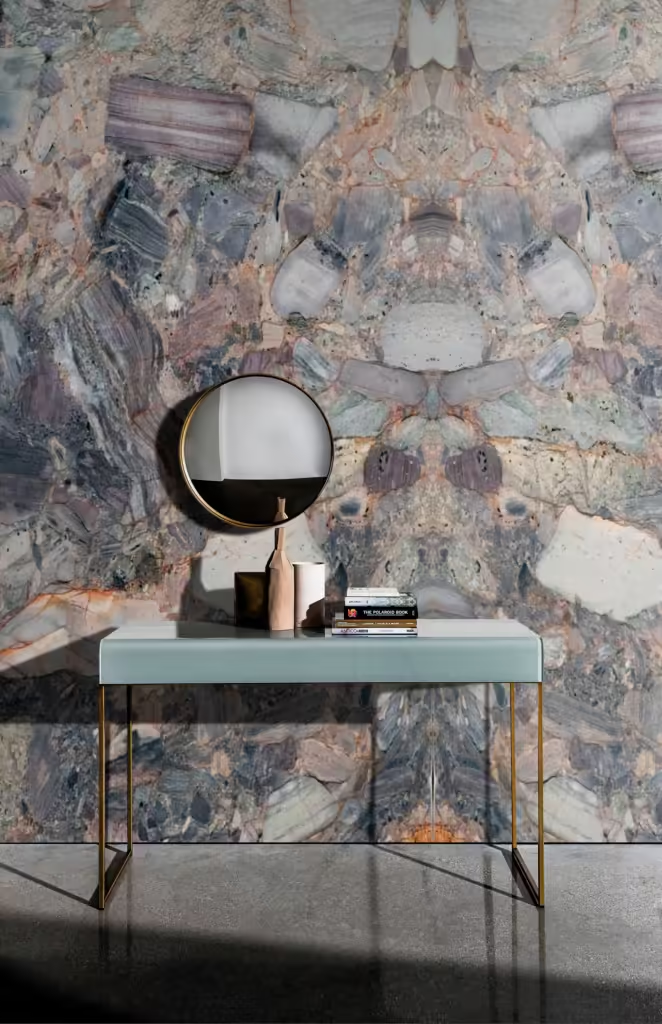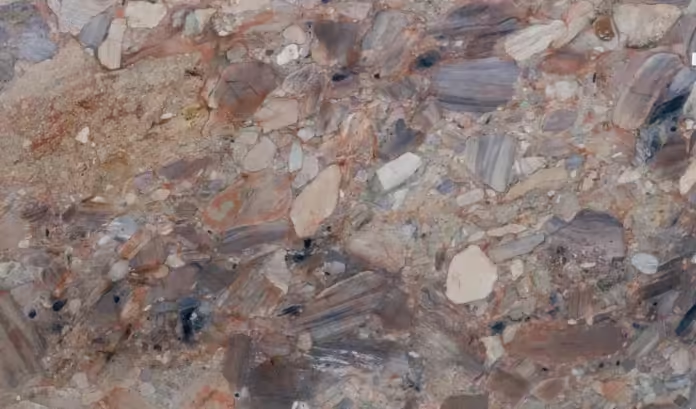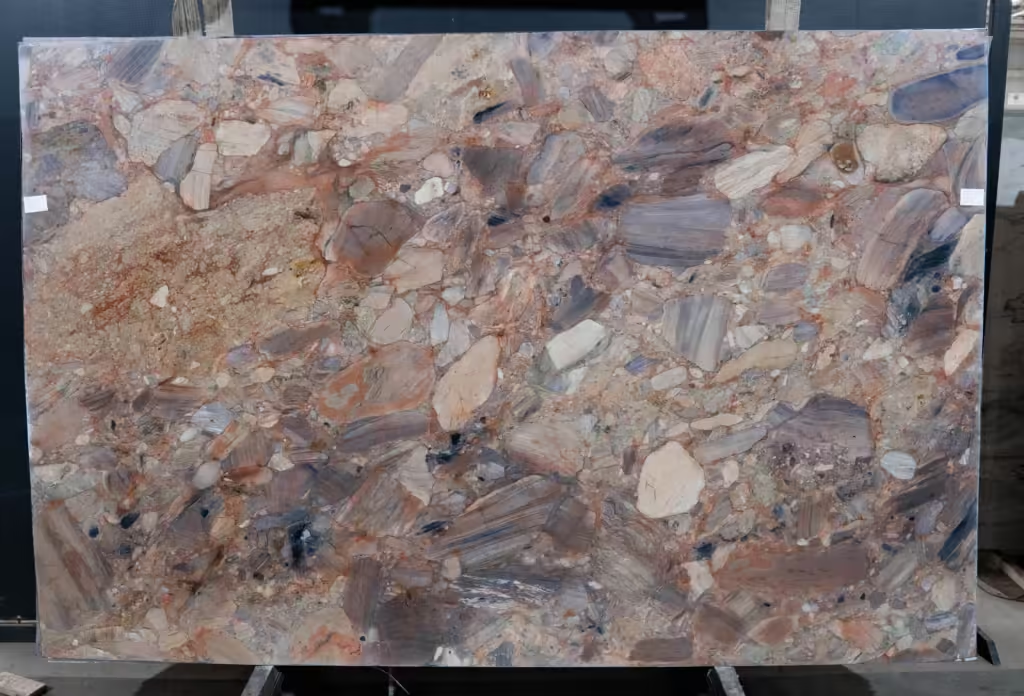A beige metamorphic rock with whitish, greenish, and grayish portions, granoblastic texture, and fine to medium granulation is observed. It is possible to notice the presence of rounded clasts that refer to the protolith of the rock (Conglomerate). No fractures, cavities, or pores were observed. Significant weathering changes were not observed either. No macrofossils or xenoliths were observed in the analyzed samples. Silicate rock. The rock, named Excalibur, has a proportion of 80% clasts and 20% matrix. Aphanitic matrix and centimeter-sized clasts, reaching up to 20 centimeters.
| Physical Test Results | |
| Name: | Excalibur |
| Classification: | Quartzo |
| Color: | Beige with Whitish, Greenish and Grayish portions. |
| Apparent Porosity: | 0,35% |
| Water Absortion: | 0,13% |
| Resistance to Abrasion: | 0,61 mm |
| Modulus of Rupture: | 8,29 MPa |
Imagine a rock that has undergone extreme transformations over millions of years! Under the microscope, this metamorphic rock reveals a granoblastic texture, where mineral grains have similar sizes and fit tightly together due to the recrystallization process.
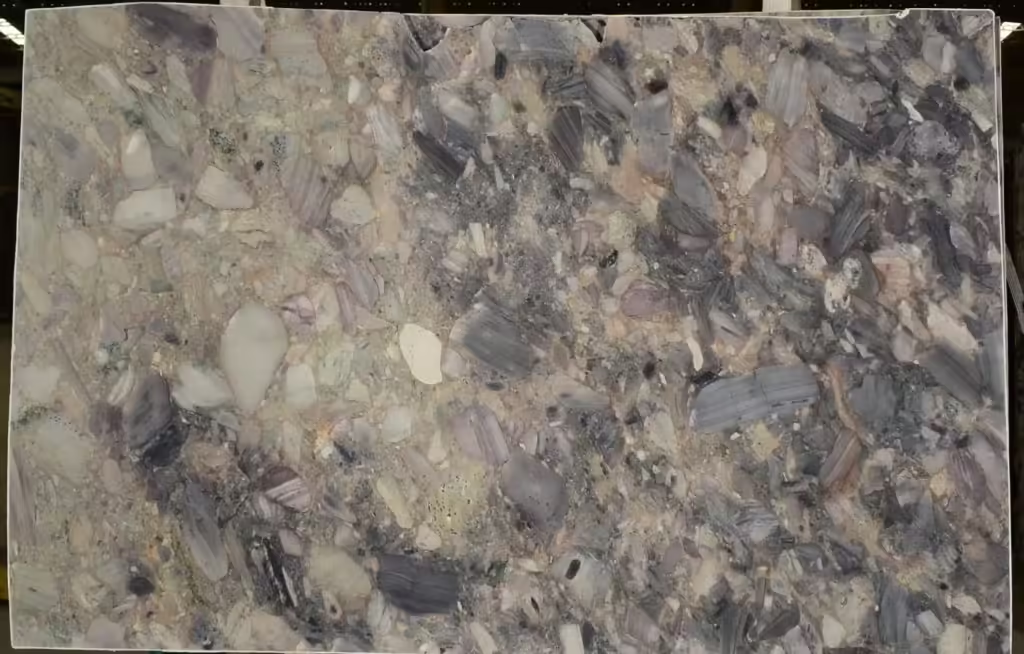
Its composition is dominated by Quartz (88%), one of the most abundant minerals in the Earth’s crust, providing strength and durability to the rock. We also find Muscovite (10%), a mica mineral that reflects light, adding brilliance and structure, and Chlorite (2%), which brings subtle greenish tones and indicates specific temperature and pressure conditions during the rock’s formation.
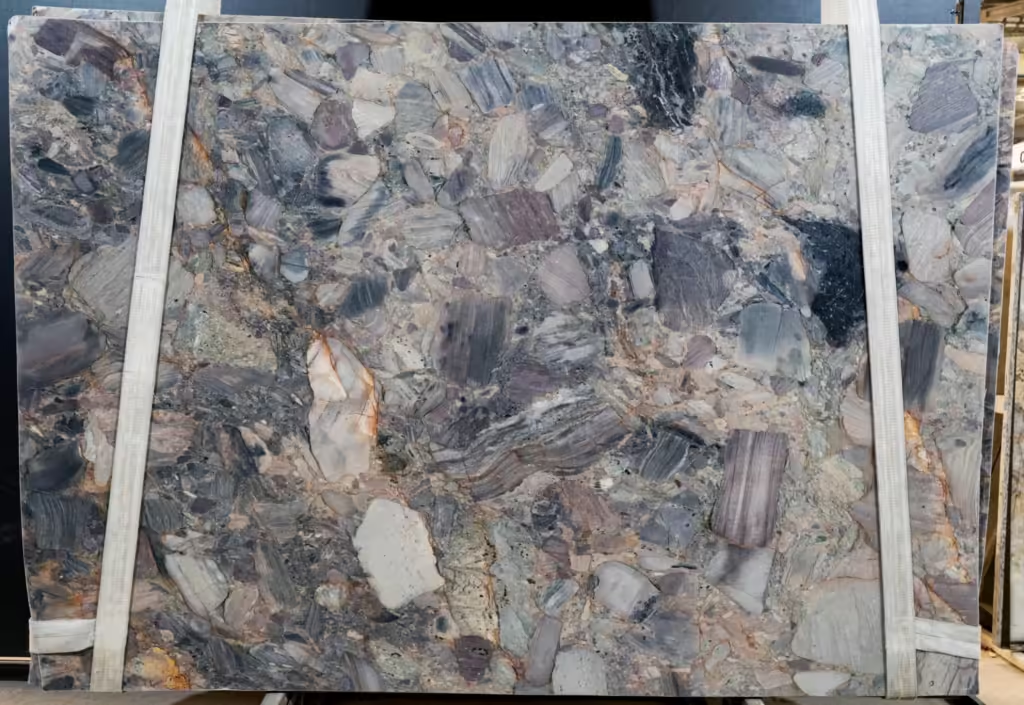 This rock is classified as Metaconglomerate, meaning it was once a sedimentary conglomerate that, after undergoing intense metamorphic processes, had its minerals recrystallized and its internal fragments modified.
This rock is classified as Metaconglomerate, meaning it was once a sedimentary conglomerate that, after undergoing intense metamorphic processes, had its minerals recrystallized and its internal fragments modified.
